Secret Provence: Exploring the Drôme Provençale in the South of France
Night was falling quickly and, having just navigated the breathtaking, and breathtakingly treacherous, roads over Provence’s jagged Mont Ventoux, I was anxious to reach our destination before dark. Not until the GPS announced two kilometres ahead did tiny Montaulieu appear, a hilltop mirage dramatically backlit by the setting sun. Eight hairpin turns later, we’d reached our destination: minuscule, enchanting and utterly silent. Everything and nothing to do with the charming, upscale, tourist-clogged perched villages of the Provence I knew. But this wasn’t Provence, it was the Drôme Provençale, a region seemingly suspended in time.
“This is the old Provence,” explained our host, Wolf Leth, a German national who, with his French wife, Danièle, rebuilt his modest 12th-century castle keep in the early ’80s, a dozen or so years after a group of hippies reclaimed the village nestled in the steep, ravishing foothills of the Alps, then little more than a ruin with a population of fewer than five inhabitants. “There is still a wildness here that you don’t find in Provence proper,” said Leth.
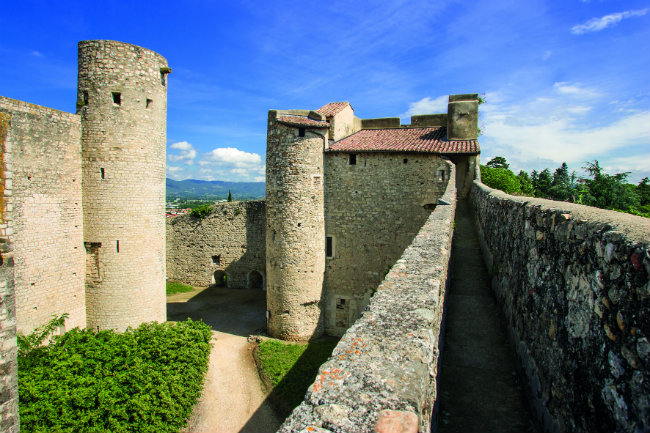
The Chateau des Adhémar in Montélimar. Photo: Drôme Tourisme
Indeed, it was by post-revolutionary decree that this rugged, lavishly-endowed land that juts into Provence was consigned to the Drôme department, following almost precisely the medieval contours of France’s ancient Dauphiné. Now, the Drôme Provençale is considered to be the northern gateway to Provence, graced with all the wealth of its illustrious neighbour– ancient perched villages, silvery olive groves, abundant lavender fields, orchards, singular wines and a temperate climate – yet less touristed, unspoiled and with its own proudly authentic identity.
Blessed both geographically and agriculturally, Nyons, the region’s beating heart, lies on the crystalline Eygues River, nestled in its own sheltered microclimate between mountains and fertile rolling plains. Both landscapes yield an abundance of produce, much of it organic, as the Drôme – the first department to champion the ‘bio’ label – far outstrips all other regions in France for organic farming.
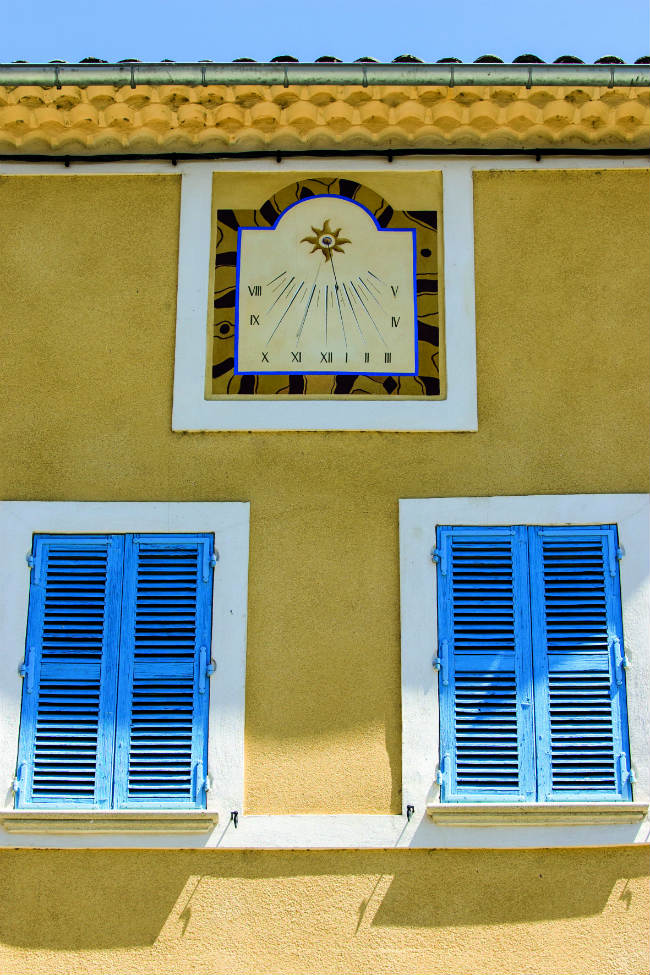
Photo: Drôme Tourisme
LOCAL DELICACIES
There’s no better way to discover the local riches than at the markets, so we headed to Nyons’s bustling Thursday open-air market, one of the largest and most picturesque in the Drôme department – or indeed in all of northern Provence.
Among the lavish produce on display, local delicacies can be had in every season: the highly-prized Nyons black olives, plump red cherries and fragrant Orangé de Provence apricots from high-altitude orchards, and in late autumn and winter, gnarly black truffles. Stands selling fresh, aged and often organic goat’s cheeses, particularly the two local AOC varieties, Picodon and Banon abound, as well as fat cakes of the famous melt-in-your-mouth almond or hazelnut-flecked Montélimar nougat.
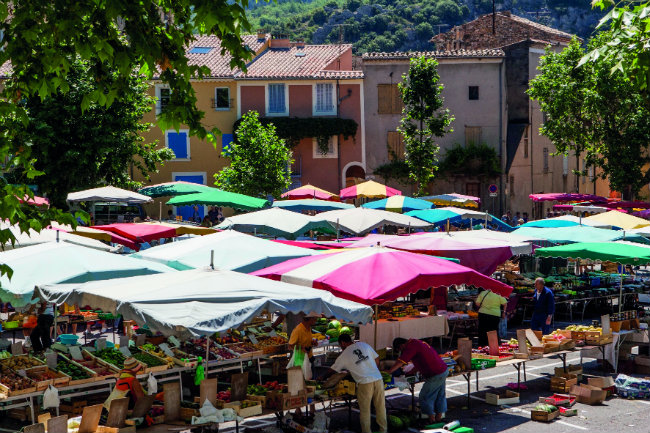
The open-air market in Nyons. Photo: Drôme Tourisme
The area around Nyons is also Provence’s, and France’s, largest producer of aromatic herbs and medicinal plants, and the markets of Nyons and the many surrounding villages are an excellent source of artisanal herbal tea blends (tisanes), hand-crafted essential oils, soaps, cosmetics and other organic concoctions, not to mention lavender galore.
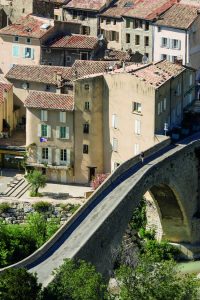
Nyons bridge. Photo: Drôme Tourisme
After the morning market, and lunch in the sun-dappled shade of plane trees, an afternoon exploration of Nyons’s artisanal shops is another primer in the area’s largesse. On the promenade de la Digue, Distillerie Bleu Provence, maker of essential oils, particularly out of the local lavender – grown at 2,000 to 2,500ft (600-800m) to qualify as the real AOC deal – fragrantly introduces visitors to the distillation process. Also a museum, outdoor café and boutique wrapped into one, you can stock up on their own top-quality lavender and other essential oils, soaps and cosmetics as well as those of other quality producers. A few doors down, Vinaigrerie La Para specialises in small-batch vinegars handmade on the premises and perfumed with local ingredients: sage, raspberry, fennel, elderberry, thyme, cassis and, of course, lavender.
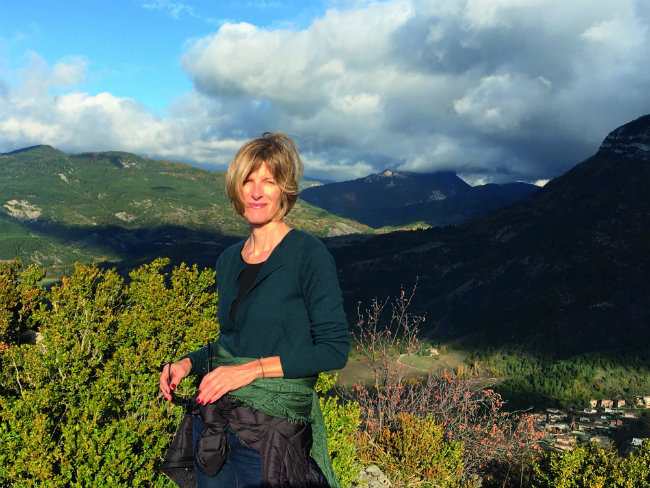
The author in Rémuzat
But as Nyons is truly synonymous with olives, a visit to the Vignolis cooperative, producers of France’s first AOC olive oil, is an indispensable introduction to the local “black pearls”. Nyons’s dark brown, slightly wrinkled olives are brine-soaked for six months to achieve their fruity, buttery flavour and pleasing mellowness. Here, you can visit the olive museum or cosy up to the bar for a range of tastings: olives, tapenades (mixed with local honey and other fresh ingredients, these are a revelation) and oils. Vignolis’s impressive shop carries a tempting range of local wines, foods, herbs, soaps, fruit juices, potted meats and terrines and cosmetics, the list goes on…
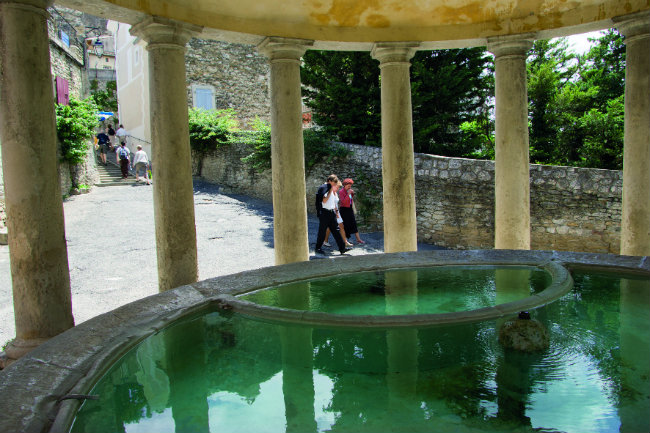
Grignan. Photo: Drôme Tourisme
A stroll through the town square toward the 14th-century Romanesque bridge takes you to La Scourtinerie, a museum, factory and boutique, and the last place in France still weaving the original coconut-fibre filters for wine and olive oil, a process you are encouraged to observe. Though most olive oil is industrially filtered, these thick, hand-loomed mats permit the oils to retain their healthy sediments (the scourtin-filtered oil sold here is deliciously light, fragrant and fruity.) These days, the mats, which are quietly being snapped up by the great wine estates of Bordeaux, also make sturdy and attractive floor mats, which are an essential element in any true Provençale household.
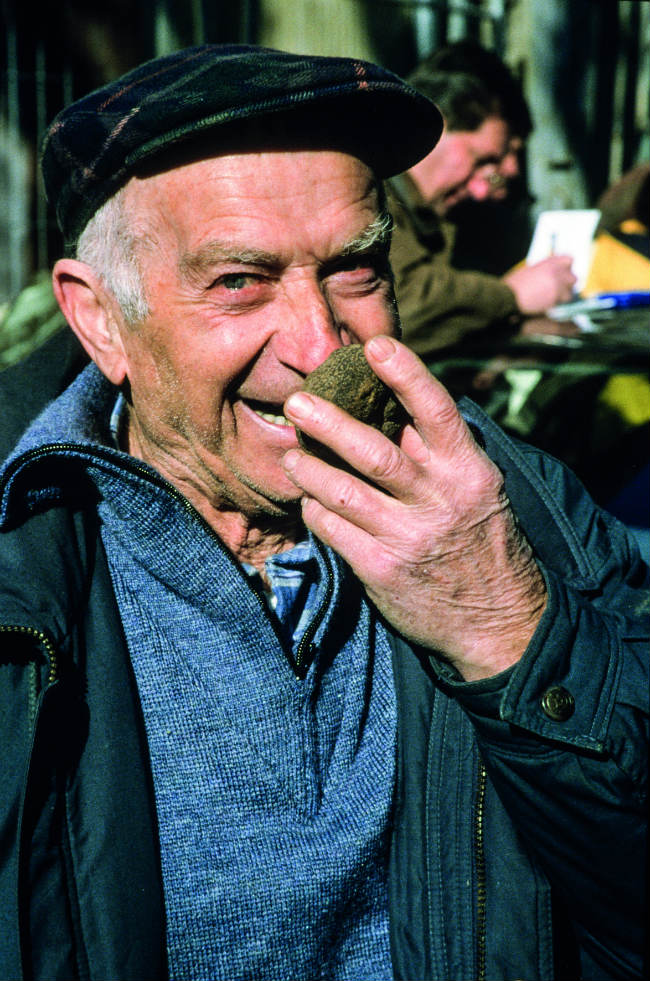
Tasting le parfum de la truffe. Photo: L Pascale
OUTDOOR PURSUITS
The Parc Naturel Régional des Baronnies Provençale, dotted with sleepy perched villages among the majestic landscapes of the pre-Alps, is a must for touring by car, hiking or participating in any number of outdoor activities: horseback or donkey-riding, rock-climbing, cycling, hang-gliding and river swimming (information on all at the Nyons tourist office, with detailed circuit maps for hikes at all levels). Though manoeuvring the hairpin curves up and down mountains can be a challenge, especially in high season – those who do not drive a manual car, be sure to request an automatic when renting – the pay-off in pure splendour is worth it.
Among the villages to explore, medieval Buis-les-Baronnies’ Wednesday market along winding streets attracts many small producers, and La Maison des Plantes Aromatiques provides an introduction to this ancient agricultural centre.
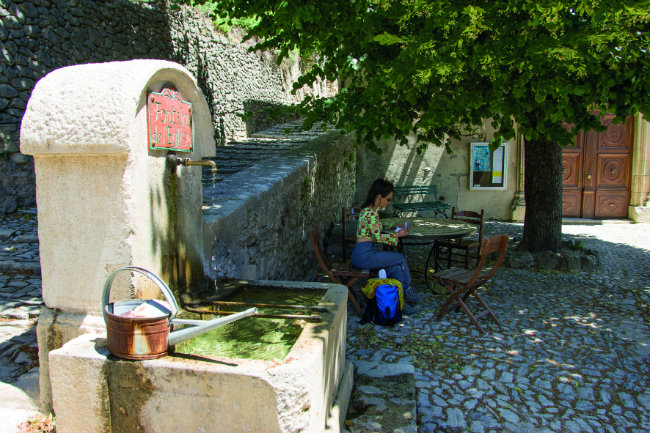
Montbrun-les-Bains. Photo: Drôme Tourisme
For the perfect after-hike activity, head to Montbrun-les-Bains for its sulphur- and magnesium-rich waters and rejuvenating treatments at the ValVital spa, along with a pool and outdoor hot tubs overlooking the mountains. The best time to go is in spring and autumn (it’s open till early November), as this small, everyman’s spa gets crowded in summer.
Whizzing by at 1,500ft, the famed vultures of Rémuzat seem close enough to touch from this breezy mountain eyrie. Both the vertiginous drive to Rémuzat and the gentle 20-minute walk to the peak, past lavender fields, pastures and a ruined abbey, make a brilliant excursion.
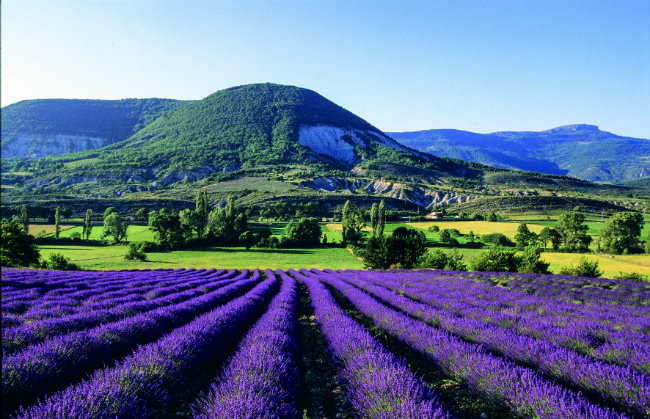
Lavender fields in Les Baronnies, the area to the north and east of Mont Ventoux. Photo: L Pascale
A CHÂTEAU REBORN
Rising out of the lavender fields like a storybook image, the elegant town of Grignan, in distinctive pale stone, is crowned by the Château de Grignan, the destination of many of Madame de Sévigné’s famous 17th-century letters and one of France’s finest Renaissance châteaux. De Sévigné was bereft when her beloved daughter, Françoise-Marguerite, wed the Count of Grignan and left Paris for the south, and their lively, 25-year correspondence shines among the great epistolary literature of France.

Madame de Sévigné
But between the devastations of the Revolution and an impecunious aristocrat who sold off the château’s contents (much of it carted to the United States), the house was left almost a ruin. Happily, it was bought in the 1920s by Marie de Fontaine and restored to the glory we see today. A guided tour (in French, brochures in English) will point out some of the original furnishings, discovered in local flea markets and auction houses around France, as well as portraits of the generations of women who presided here. From the château, stroll down pretty cobbled streets to the Renaissance Fontaine Sévigné and the superb classical-style lavoir (public washing facility) that abuts Grignan’s other treasure, Le Clair de la Plume.
If you treat yourself to only one gourmet meal on your trip, do it here. Chef Julien Allano earned his Michelin star creating regional cuisine at its very best, capitalising on his close bonds with the area’s top producers, with local wines to match. Dinner in the atrium dining room (or garden in warm weather) is a leisurely affair, starting off with an array of tantalising amuse-bouches, followed by Allano’s skilled dishes created with an exquisitely imaginative touch. Better yet, a weekend stay at this charming hotel set among two period houses will satisfy any craving for la vraie Provence, with rooms full of antiques, spacious baths, an organic pool, splendid breakfasts and all the peace and quiet you could wish for.
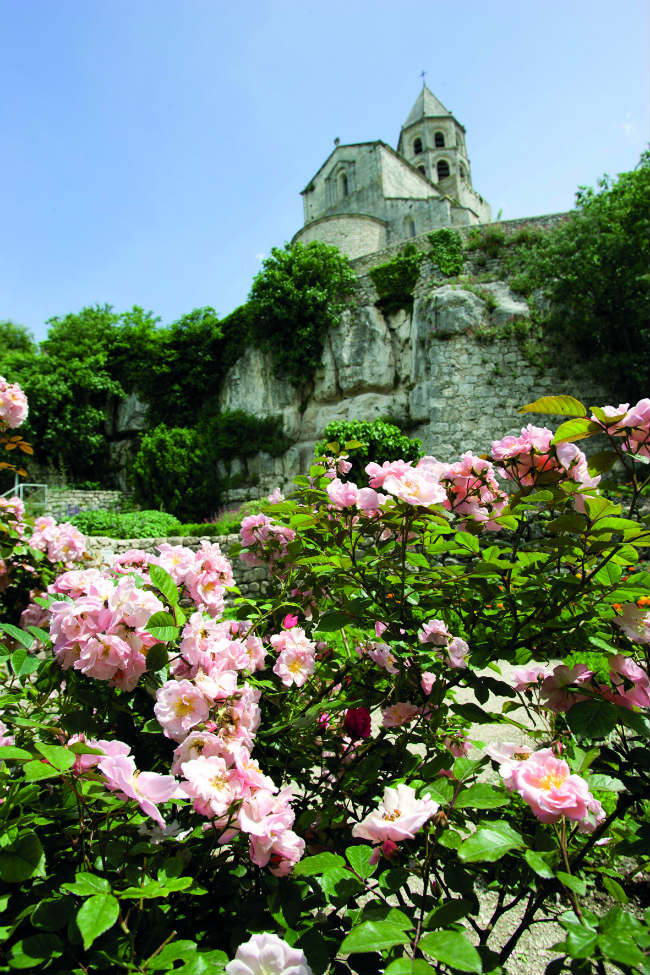
La Garde-Adhémar. Photo: Drôme Tourisme
ROOT OF THE TRUFFLE
In the western Drôme Provençale the land abruptly evens out after Nyons, settling into the gentle slopes of the Rhône Valley, crossed with regimented rows of vineyards, lavender fields and the craggy oak forests whose roots harbour the famous diamant noir – tuber melanosporum, the black truffle of Tricastin.
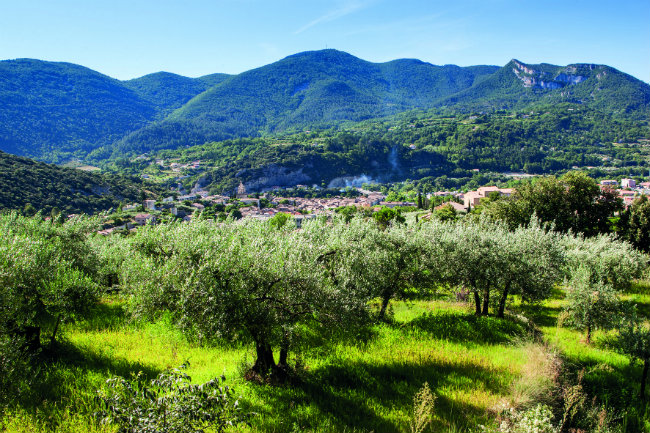
The region is famed for its olives. Photo: Drôme Tourisme
A detour to Saint-Paul-Trois-Châteaux and the Maison de la Truffe et du Tricastin provides a compelling introduction to the legendary fungi. They know whereof they speak: the Tricastin area furnishes two-thirds of the truffles in France, far more than the Périgord or any other region, making it the largest producer in the world.
There are two nearby hill towns to visit: in Suze-la-Rousse the Université du Vin is housed in a château where you can tour a small museum and learn about the history of the region’s wines, most notably the AOC Grignan-les-Adhémar, Cru Vinsobres and the Côteaux de Baronnies.
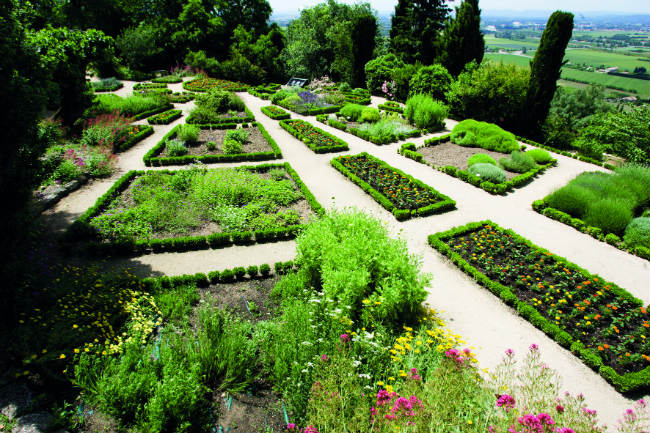
La Garde-Adhémar. Photo: Drôme Tourisme
A few kilometres away, La Garde-Adhémar – a designated Plus Beau Village de France – is a lovely place to stroll among picturesque stone houses, an ancient château and medieval ramparts that provide endless views over the valley and mountains beyond.
I couldn’t have wished for a more perfect welcome to the region’s breathtaking northern reaches than at Les Oliviers de Salettes, in Charols, a 15th-century château hotel set in 12 acres of gardens, meadows and woods, with panoramic vistas in every direction. A gracious welcome, spacious rooms with endless views, a superb gastronomic restaurant, spa and pool add up to a level of hospitality, beauty and peace that’s rare to find.
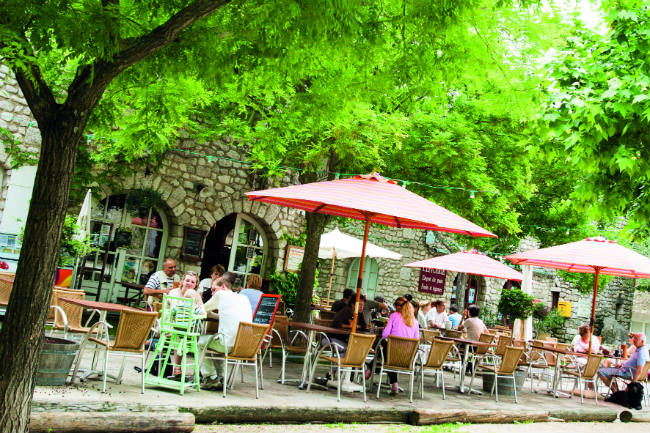
A terrace in La Garde-Adhémar. Photo: Drôme Tourisme
Of the hilltowns to the east, the beautifully restored 14th-century Le Poët-Laval, another Plus Beau Village de France, is home to the Musée du Protestantisme Dauphinois, set in one of only three Protestant temples to survive in France. The old town cemetery is divided between Protestant and Catholic. Dieulefit (which means ‘God made it’) is the pottery capital of the area, full of galleries and artists’ studios where you can purchase colourful ceramics in many styles and pay a visit to the Maison de la Céramique.
Montélimar is worth a visit for the castle and art gallery, to see the Musée d’Art Contemporain Saint-Martin and to sample their famous nougat. At Arnaud Soubeyran you can watch the confection being made, enjoy an organic lunch in the on-site café and stock up on nougat, calissons de Provence, pralines, chocolateen-robed nuts and fruit, melt-in-your mouth guimauves (marshmallows) and other specialities. A sweet finale to an unforgettable journey.
From France Today magazine
For more information visit www.ladrometourisme.com
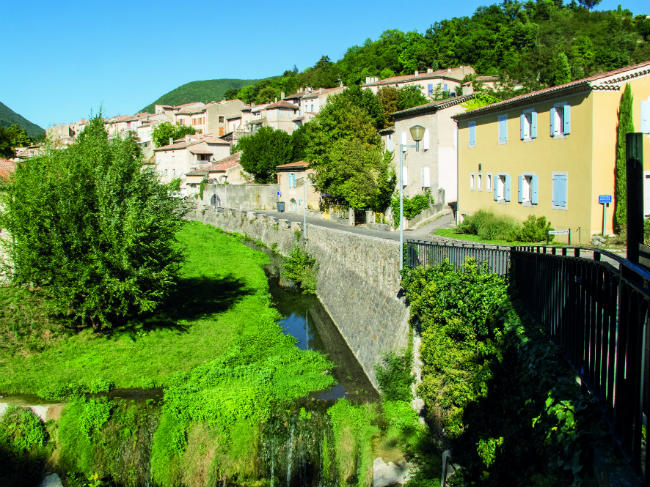
The town of Dieulefit. Photo: Drôme Tourisme
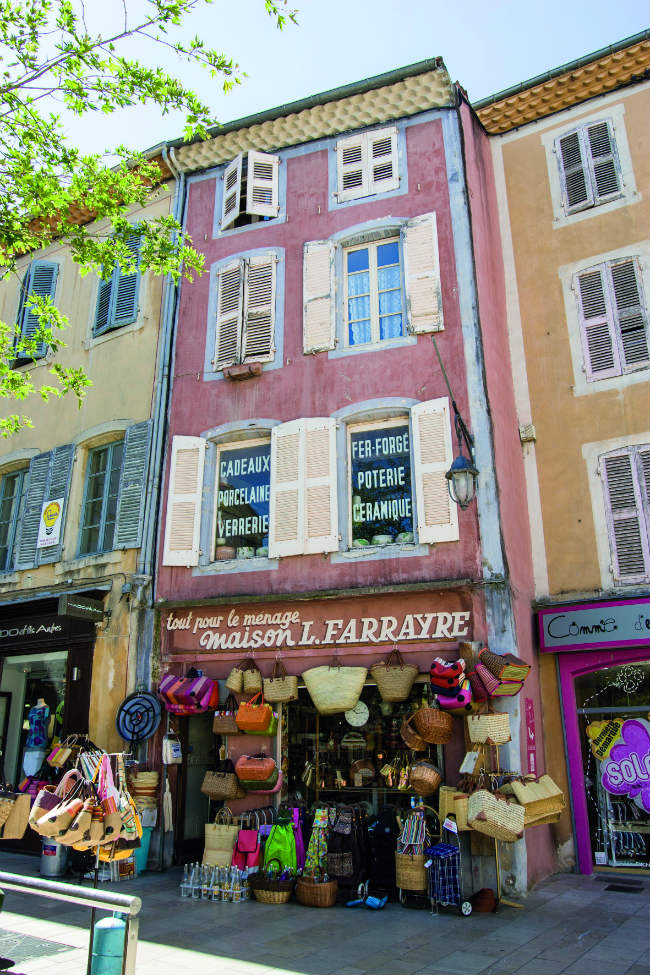
Montélimar. Photo: Drôme Tourisme
Share to: Facebook Twitter LinkedIn Email
Leave a reply
Your email address will not be published. Required fields are marked *

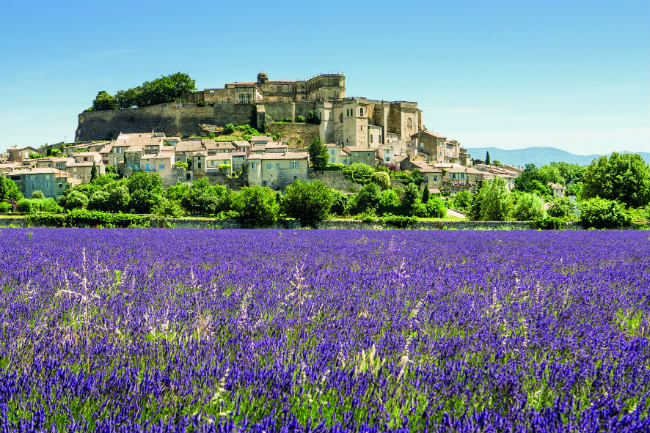




REPLY
REPLY